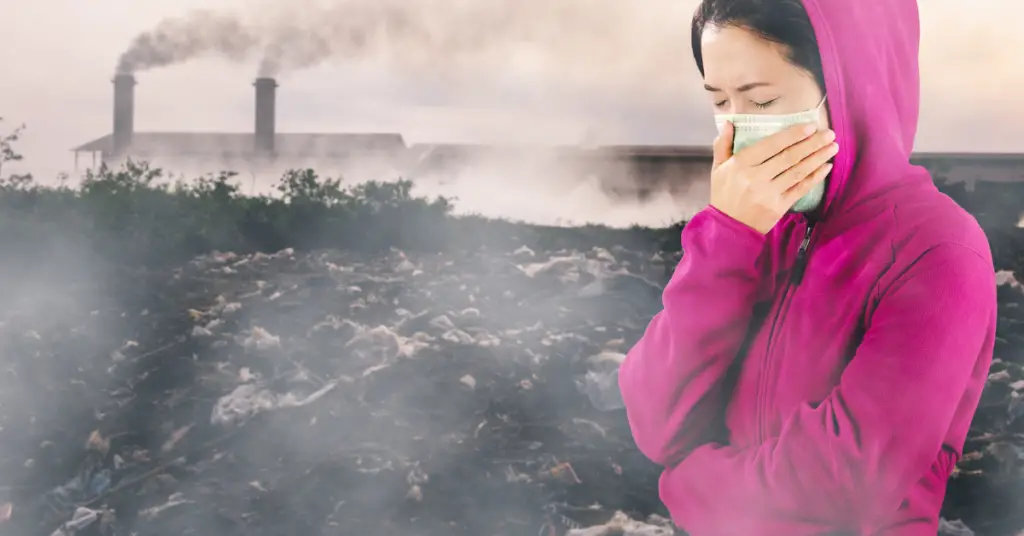Air pollution by hydrocarbons often manifests itself in the form of photochemical smog. Hanging like a thick cloud over industrial areas, people sometimes confuse it with natural mist in the early morning.
In the past, people and industries believed that the atmosphere was so vast that it contained gases or particles released into the air, it would disperse and dilute to the point of having no adverse effect. But as air quality has declined over time, scientists have documented that air pollution can cause irreparable damage to ecosystems and human health, often far from their original sources.
A striking example comes from West Africa’s Lake Chad, which shrank by 95 % between 1963 and 1998. Experts generally thought the shrinkage was caused by unsustainable water use in the region, but recent evidence suggests air pollution.
Europe that reduced rainfall in the lake catchment may also have contributed to this ecological disaster. The lake’s water level has risen since 2007, likely partly due to European air quality regulations. Despite this positive turnaround, air pollution continues to be a serious problem threatening humans and wildlife across Africa.
A significant form of air pollution is hydrocarbons, which are released when burning fossil fuel combustion, especially during transportation, power generation, and other industrial activities. Pollution by hydrocarbon compounds present in the air can sometimes be perceived without scientific equipment, by bad smells, air turbidity, and irritation of the eyes and lungs that a person can experience in large cities with very polluted air.
When exposed to sunlight, these chemicals can react with other gases and particles inside the atmosphere to produce photochemical smog, made up of ozone and other secondary compounds. In the upper atmosphere, ozone filters out harmful ultraviolet rays, which benefit most living things; but at ground level, high concentrations of ozone present several dangers.
For example, it damages plant tissues which weakens them; high levels of surface ozone caused crop damage in Botswana and South Africa. Exposure to hydrocarbons also presents several threats to humans: it has altered the DNA of certain people, often a precursor of cancer, in Benin, caused lung damage in Côte d’Ivoire, and subjected people to carcinogenic compounds in the DRC and Ghana.
The lack of air monitoring and standards in much of sub-Saharan Africa and lack of awareness (people often confuse photochemical smog with natural fog and morning fog should therefore be of serious concern to conservation biologists and society at large.
Burning fossil fuels also releases sulfur oxides (SOx) and nitrogen oxides (NOx) into the atmosphere, where they combine with water vapor to produce nitric and sulfuric acid. These acids later return to the soil as acid, with a considerably lower pH than normal rainwater. Prevailing winds can carry acid rain clouds long distances, so the effects of acid rain can occur hundreds of miles from their sources.
Since acid rain is closely linked to the water cycle, aquatic and soil organisms are particularly vulnerable to the negative effects of acid rain. Plants exposed to acid rain, either directly or after absorbing contaminated water from the soil, have often been severely weakened or even killed: it has even caused the uprooting of plants in Zambia.
Another significant contributor to air pollution is household fuel consumption. During these activities, very small polluting particles are released into the air. Because these particles are so small, they are difficult to filter from the air and can be easily inhaled. Once inhaled, the particles can pass into the victim’s bloodstream, from where they negatively impact cardiovascular health, neurological development, and cognitive function.
Despite the harmful impact of these particles on the environment, many countries don’t monitor them. Conversely, measures that mitigate pollution caused by household fuel combustion may even help to slow the rate of habitat loss, as this type of pollution is associated with inefficient wood-burning stoves, coupon farming, and the artisanal coal industry

Erzsebet Frey (Eli Frey) is an ecologist and online entrepreneur with a Master of Science in Ecology from the University of Belgrade. Originally from Serbia, she has lived in Sri Lanka since 2017. Eli has worked internationally in countries like Oman, Brazil, Germany, and Sri Lanka. In 2018, she expanded into SEO and blogging, completing courses from UC Davis and Edinburgh. Eli has founded multiple websites focused on biology, ecology, environmental science, sustainable and simple living, and outdoor activities. She enjoys creating nature and simple living videos on YouTube and participates in speleology, diving, and hiking.

